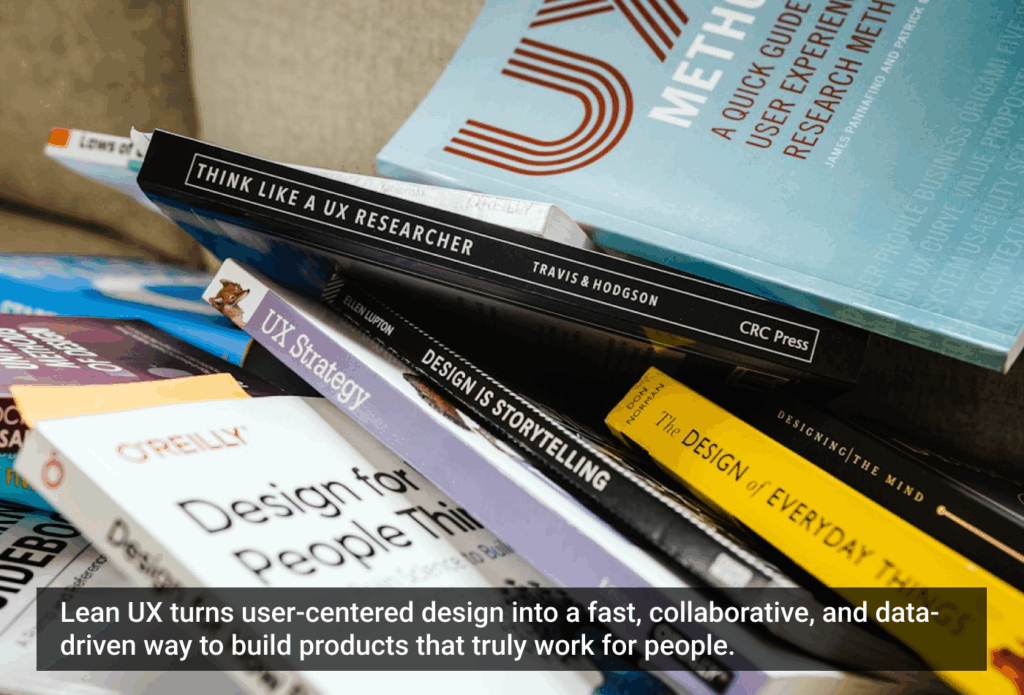It’s damn hard to recruit and hire great user-centered design talent right now. Demand is palpably high. Supply seems depressingly low.
Midwestern organizations are competing against every Silicon Valley startup throwing cash and options at the limited talent pool. To win the recruiting battle against companies in hotspots like San Francisco and New York City, your opportunity can’t be just a little bit better. It has to be remarkable, noteworthy, and significantly more interesting than the multitude of jobs in a coastal candidate’s back yard.
Once you’ve finally piqued a candidate’s interest, there’s a long way to go before you land them. If you’re too slow to react or you bungle your correspondence, you’re toast.
There is hope. It can be done. Here’s what I’ve learned over the last 18 months, in which I’ve grown an in-house product design team from two to six.
Obvious Point of Order: Yes, Great Experience Design Happens in the Midwest
Should a candidate ever assert that interesting product and experience design only happens on the coasts, politely point out any of the following counter-examples:
- Russ Unger (GE Capital, Chicago) co-authored an excellent book on managing and guiding UX-driven projects, A Project Guide to UX Design.
- Peter Morville (Semantic Studios, Michigan) co-authored the standard book, Information Architecture for O’Reilly—the “Polar Bear” book.
- Ryan Singer (37signals, Chicago) is an outspoken, intellectual lead designer whose team makes designing incredibly nuanced products look easy.
- Fred Beecher (The Nerdery, Minneapolis) is a well-regarded Axure/prototyping advocate and user experience mentor.
- Bryce Glass (Manta in Columbus, Ohio) is the co-author of the useful and relevant Building Web Reputation Systems.
- Or, any of these talented folks.
With that out of the way, here’s what you can do to stand a chance recruiting someone from the coasts.
Play to Your Organization’s Strengths
Is your company competing in an unusual industry? Sell it. Is your startup tracking legitimate, sustainable business metrics? Share some. Do designers have access to full customer databases for research? Spend a couple hours taking an inventory of what sells your company, its culture, and design process. Explain that process and the tools you use. When you describe your company to a stranger, what’s the one thing that causes them to actually start listening to you?
At my company, Hudl, we make video apps and services for sports coaches. That fact alone grabs attention. Surprisingly, it’s the little things we’ve touted that have helped tremendously with recruiting, such as:
- We’ve listed openings for “Sports-Loving UI Designers,” and received hundreds of great cover letters and applications from passionate fans who also happen to design. Here’s a chance to build apps that help your favorite teams win.
- Our office is in the middle of a billion dollar development project in downtown Lincoln, Neb. Lately, I’ve been sneaking in comments about our box seats at a brand new sports arena.
- We offer $1,500 with no strings attached to attend a training conference each year. I often couple that with a personal conference recommendation for a candidate given their experience (or lack thereof). Past employees have taken their trip within a couple months of being hired.
Avoid dwelling on things that don’t set you apart. For example, unlimited vacation was PR-worthy three years ago. Today, it’s table stakes for many startup companies.
Know What You Need and Hustle When You Find It
With all of the titles and skills that fall under the UX umbrella, you can waste a lot of energy on candidates who seem great on paper but ultimately aren’t the kind of designer you need.
One helpful tactic is to explicitly state who you don’t want applying at the beginning of your job description. In our search for UI and product designers at Hudl, we say right up-front: this is not a position meant for specialist visual designers. It’s also not one for pure front-end developers. But, if you happen to have done a little bit of both, you’re in the right place.
It’s important to find someone with solid experience in that core area you need most and “flashes” in other areas. So, maybe a candidate has yet to work on any mobile projects. But you learn that at least their portfolio is responsive and mobile friendly. And they have proof of conducting serious user research and usability studies, which is what you really needed in the first place. Get them into your hiring process.
Once you’ve targeted a potential winner, prepare to hustle. Why? You need to make a strong connection early so that your company stays at the top of your candidate’s mind throughout their job search. If you’re direct, thorough, and shoulder the back-and-forth communication yourself, you can outmaneuver bigger, slower HR departments.
I’d like to write a more in-depth article on this subject but until then, here are a few obvious and a few subtle tactics, which have helped me hire great designers:
- Use a simple screener question on your application form to test for depth of thinking in a particular area (“Tell us about your favorite product interface. Why is it your favorite?”).
- Respond to qualified applicants via email within twelve hours (sooner if they apply in the morning). Get back to top candidates as soon as humanly possible (drop what you’re doing).
- When you respond, you must show that you’ve done your research. Tie their experience and ambitions to your current projects. Be specific and give details.
- If you’ll be their supervisor, let them know so they can start researching you.
- Provide clear expectations of your hiring process in the first interview. If you can provide exact timelines, do it. Top candidates will have multiple options and offers so any information you can offer makes their search easier. Plus, you’ll earn a bit of trust and respect for your company.
- Set your team apart by using a short-term project to test aptitude (5-15 hours). Pay them adequately and, if they’re inexperienced, allow them to use the work in their portfolio (even if you don’t give them the job).
Embrace Remote Employees
Incorporating a full-time remote employee into your process is challenging and worth its own article. Thankfully, hiring a remote designer is actually straightforward.
Few companies let designers (or anyone, for that matter) work remotely. It’s an immediate way to stand out. For instance, job boards like Authentic Jobs let candidates filter listings to show only telecommuting opportunities.
It’s important as a recruiter to look for past experience working with remote teams or freelancing with remote clients. Give them a contract project with loose rules and deliverables and see how they handle the communication. You could use a slightly modified version of the project you’d use for in-house candidates.
Confront Weaknesses Head-on
In the Midwest, you’re wise to avoid selling the amazing weather or scenic views. (Though truthfully, it’s not nearly as bad as it seems!) Instead, you should find out early what apprehensions a candidate holds about moving to the Midwest. “So, I can imagine the weather in San Diego trumps ours here in Nebraska, but is there anything more significant that would prevent you from making a move to the Midwest?”
Your local area likely has tons to offer. Be ready to make the case early in the conversation with a candidate. It might be the first thing on a forthright coastal candidate’s mind. I’ve lost good candidates because I wasn’t prepared to make a compelling case when someone asked: “Why should I move to Nebraska?” right after I introduced the company.
Everyone will save time and feel better if you tackle potential sticking points early. If a coastal candidate senses you might be hiding something, they’ll move on to the next opportunity.
In Conclusion: Go Above and Beyond
There’s no room for error recruiting great employees from the coasts. Consider every phase of your hiring process from a candidate’s perspective and make sure every touch-point goes far beyond the basic expectation.
Since February 2012, I’ve hired two coastal product designers—one from New York and the other from California. Both were sports fans seeking remote positions for a product-focused company. Our openness to remote work started the conversation but the personal attention and hustle clinched the deal. Hudl’s latest two designers were lucky catches from here in Nebraska.
There you have it. I just gave all of my tips away. Return me the favor with your best UX recruiting advice @uxmag @noluckmurphy #uxhiring on Twitter.
Image of Chicago skyline courtesy Shutterstock.







